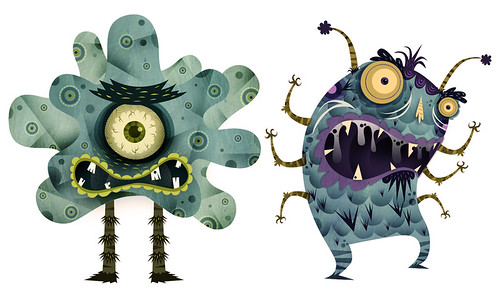So are we to take it that this is not a happy dog, since he wags here to the left?
(This blog was put on the University of Liverpool Viewpoint Website and is reproduced here just for my own personal diary)
The media and social media have been alive today with the latest revelations of complexity in canine caudal oscillations: “Tail wags”. The bottom line of Prof Angelo Quaranta’s latest research is simply that dogs can read other dogs’ tail wags for emotional features such as happiness and nervousness. The claim that dogs wag their tails more to the right than left when they are happy was reported years ago by the same group. To pick holes in the research would be too easy; for example the authors imply that stress results in elevated heart rates (which it does), but that that “happiness” does not. That is pretty unlikely, we did a number of student projects years ago measuring heart rates from horses and dogs and found, unsurprisingly that stimuli you would think would excite them increase heart rate considerably. A race horse for example pumps up its heart rate to near full race speed just at the thought of the race, well before it actually starts racing. So do I dispute the findings? No not at all, but I think the real interest is far deeper. It relates to whether non-humans experience emotions at all; that is the central issue and it is a regular battle ground for those debating animal welfare.
The media and social media have been alive today with the latest revelations of complexity in canine caudal oscillations: “Tail wags”. The bottom line of Prof Angelo Quaranta’s latest research is simply that dogs can read other dogs’ tail wags for emotional features such as happiness and nervousness. The claim that dogs wag their tails more to the right than left when they are happy was reported years ago by the same group. To pick holes in the research would be too easy; for example the authors imply that stress results in elevated heart rates (which it does), but that that “happiness” does not. That is pretty unlikely, we did a number of student projects years ago measuring heart rates from horses and dogs and found, unsurprisingly that stimuli you would think would excite them increase heart rate considerably. A race horse for example pumps up its heart rate to near full race speed just at the thought of the race, well before it actually starts racing. So do I dispute the findings? No not at all, but I think the real interest is far deeper. It relates to whether non-humans experience emotions at all; that is the central issue and it is a regular battle ground for those debating animal welfare.
The common scientific opinion for centuries has been that only
humans experience emotions. Occam's
razor (the simplest hypothesis should be assumed true) has been taken to mean
that unless you can prove an animal experiences emotion, it should be assumed
they do not. ...and of course, it is
pretty much impossible to prove what emotions another human is really feeling
let alone another species. Professor Quaranta’s
two famous doggie happiness papers actually never dare use the words “happy” or
“happiness” at all; I presume this is because they would receive too much
scientific pillory. To most
non-scientists it seems obvious that animals experience emotion. Elk run away when faced with a wolf pack,
dogs bark and squeak when their dinner is being prepared. However, the scientific view since Descartes,
probably well before, is that these are all simply emotion-free responses
conditioned to promote animal survival. Take
“Pavlov’s dog” experiment for example.
The scientific theory is that the dog does not “think” about food when
he hears the bell and thus salivate. The theory is that an automatic
(thought-free) response is created so that salivation directly results from
bell ringing without any thought. So the
concept of happiness, pain, love and hate are all widely excluded from
scientific consciousness. One of the
irksome things that Darwin did, apart from implying man was little more than a
naked ape, was to suggest that emotions had also evolved. Even the title of his book “The Expression of
the Emotions in Man and Animals” was and still is divergent with the broad
swath of scientific thinking.
To me it has always seemed scientifically
irrational to believe that animals’ emotions would be all that different to
humans. There is a part of the brain traditionally
associated with the expression of emotions (the “limbic system” ...sort of in
the “lower-middle” of the brain) which is extremely well conserved between
species. The most substantial
differences are in the outer parts of the brain where, generally, the thinking
is done. In terms of animal welfare, shouldn't Occam's razor read “non-animals should be considered to have the same
emotions to humans unless proven otherwise”?
I don’t argue that we should not use animals for food or medical
research, only that people should cease the mantra that emotions are unique to
the human animal. So the study of dog
tail wags and its implicit connection to a state of happiness is progress,
bringing an acceptance of animal emotion to a wide audience. The trouble is, you know what traditionalists
will say about dog tail wags now? ....it does not betray subconscious feelings
of happiness, but is simply an emotion-free response evolved to convey danger
to the rest of the pack and promote survival.







